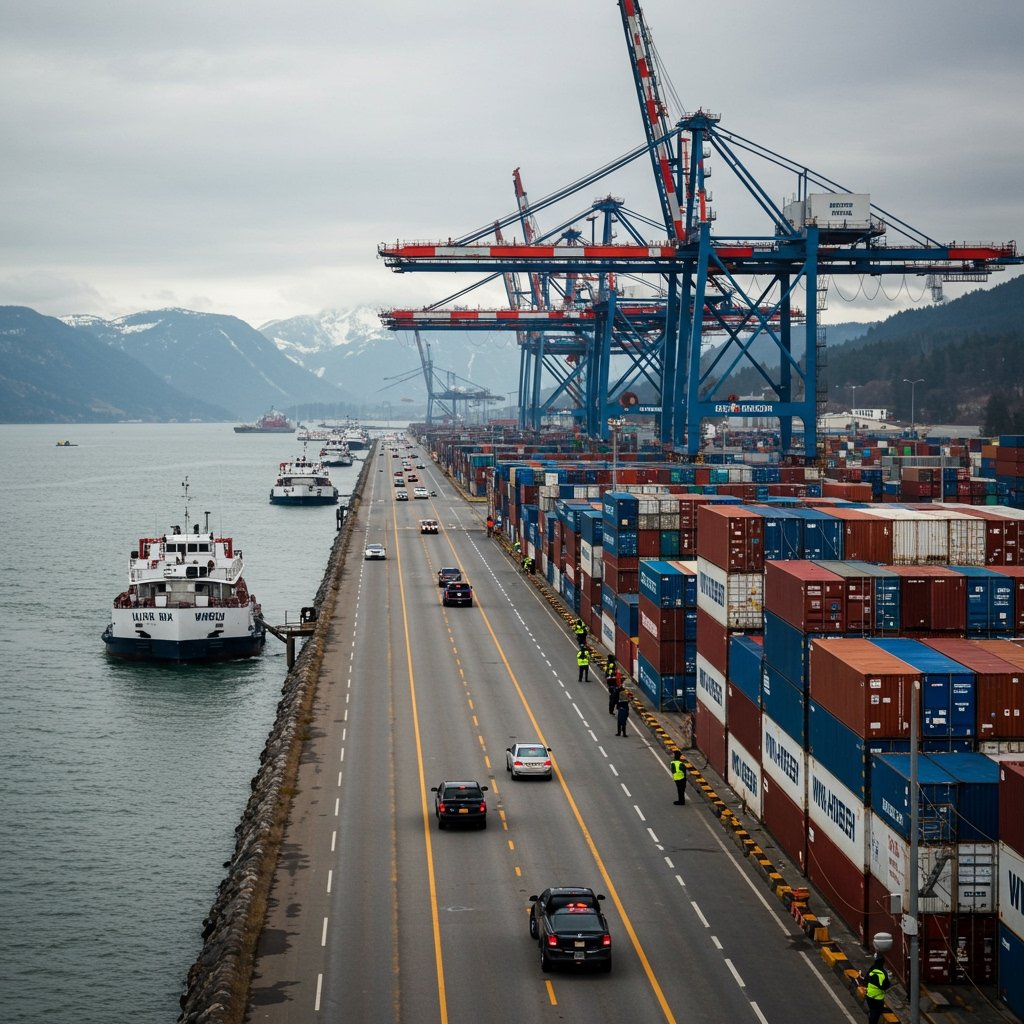Pacific Northwest Port Strikes Conclude: Landmark Labor Agreement Reached
SEATTLE, WA – After a period marked by significant disruption to vital trade flows, the protracted labor dispute affecting several major ports across Washington and Oregon officially concluded on March 18, 2025. The resolution came following intense, weeks-long negotiations between the International Longshore and Warehouse Union (ILWU) and the Pacific Maritime Association (PMA), culminating in a tentative five-year agreement.
The impasse had severely hampered operations at key maritime gateways, including the bustling ports of Seattle, Tacoma, and Portland. These ports are critical components of the Pacific Northwest’s economic infrastructure, handling billions of dollars in trade annually and serving as crucial nodes for both inbound and outbound cargo.
Background to the Dispute
The labor tensions had simmered for an extended period, ultimately leading to the disruptions that characterized the preceding weeks. At the heart of the dispute were complex and highly contentious issues, primarily centered around the implementation of automation technology and the structure and funding of healthcare benefits for union members.
The ILWU, representing the dockworkers, had voiced concerns about the potential impact of increased automation on job security and workforce size. As technology advances, port operators are increasingly exploring automated systems for loading, unloading, and moving cargo, promising greater efficiency but raising questions about the future of traditional longshoreman roles. The union’s stance has historically been to ensure that the benefits of automation are shared and that displaced workers are protected or retrained.
Simultaneously, negotiations over healthcare benefits constituted another major hurdle. Rising healthcare costs and the structure of benefit plans are common points of contention in labor negotiations across various industries, and the maritime sector was no exception. Securing comprehensive and affordable healthcare coverage is a priority for the union, while the PMA, representing the port employers, sought to manage costs and ensure the sustainability of benefit plans.
The combination of these two complex issues created a difficult negotiating environment, leading to the extended timeline for reaching a resolution and the subsequent operational slowdowns experienced at the ports.
Details of the Tentative Agreement
The breakthrough on March 18, 2025, resulted in a tentative five-year agreement. While the full details of the agreement will not be made public until they are reviewed and ratified by the union membership, the PMA and ILWU jointly announced that the deal addresses the core issues that fueled the dispute.
The agreement reportedly outlines terms for the future integration of automation technology, likely including provisions related to how new technologies will be introduced, the potential impact on the workforce, and perhaps mechanisms for mitigation or retraining. The specific contours of these automation clauses were among the most challenging aspects of the negotiation, balancing the industry’s drive for efficiency with the union’s focus on labor’s role.
Furthermore, the agreement includes provisions related to healthcare benefits. This likely involves a new framework for funding, administering, or structuring the health plans provided to ILWU members, aiming to satisfy the union’s requirements for coverage while addressing the employers’ cost considerations.
The five-year term of the agreement is significant, providing a period of labor stability that is crucial for the predictability and reliability of the supply chain moving through the Pacific Northwest ports. This long-term view is intended to offer certainty for shippers, carriers, and businesses reliant on these maritime operations.
Return to Full Capacity
With the tentative agreement now in place, the focus shifts to restoring normal operations. Port officials and the PMA have indicated that operations at affected ports, including Seattle, Tacoma, and Portland, are expected to return to full capacity within 72 hours of the agreement being reached. This rapid ramp-up is essential to clearing the backlog of vessels and cargo that accumulated during the period of disruption.
The process involves getting longshore crews back to work on a regular schedule, coordinating the movement of ships, and processing containers and bulk cargo that have been delayed. The efficiency of this transition period will be closely watched by stakeholders across the supply chain.
Economic Impact and Relief
The resolution of the strike is poised to have a significant positive impact on the economy, particularly for sectors that felt the pinch of the port slowdowns. The disruption had created bottlenecks that delayed the movement of both exports and imports, affecting a wide range of industries.
Specifically, the agreement is expected to ease the significant pressure on agricultural exports originating from the Pacific Northwest and surrounding regions. Farmers and producers had faced difficulties getting their goods, such as grain, hay, and produce, onto ships bound for international markets. Delays can lead to spoilage, missed sales opportunities, and increased costs.
Similarly, the flow of manufactured goods imports will benefit immensely. Retailers, manufacturers, and consumers have experienced delays and increased costs for goods arriving from Asia and other parts of the world. Restoring smooth operations at the ports will help replenish inventories and stabilize supply chains.
The value of trade moving through these ports amounts to billions of dollars annually, underscoring the economic importance of resolving this dispute. The backlog clearing and the return to normal throughput will alleviate financial pressures on businesses, from large corporations to small enterprises dependent on timely shipping.
Looking Ahead
The tentative agreement must still be ratified by the rank-and-file members of the ILWU. The ratification process typically involves informational meetings and a vote by the membership. While ratification is generally anticipated after union leadership reaches an agreement, it is not a guaranteed outcome.
However, the handshake agreement between the ILWU and PMA leadership signals a strong likelihood of approval. Should the agreement be ratified, it will provide the much-needed stability for the Pacific Northwest maritime industry for the next five years, allowing ports, carriers, shippers, and labor to focus on efficiency, growth, and adapting to the evolving demands of global trade.
The conclusion of the strike is a critical development for the U.S. supply chain, particularly on the West Coast, ensuring that vital goods can once again move freely through these key Pacific Northwest gateways.



















